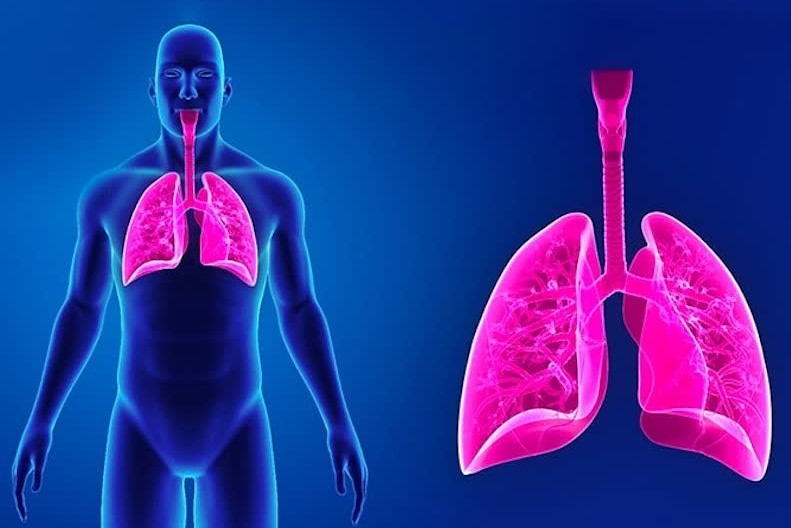
Bronchitis and pneumonia: how can they be distinguished?
Bronchitis and pneumonia are diseases that affect the lower respiratory tract, i.e. the bronchi and lungs
In both cases, the inflammation is acute but localised in different places: in bronchitis, the inflammation is confined to the airways (the bronchi), whereas in pneumonia it is the lung tissue itself that is affected.
Bronchitis and pneumonia: what are the symptoms?
Bronchitis and pneumonia tend to have similar symptoms, but distinguishing between them is essential for proper treatment, as pneumonia is generally a more risky disease and requires specific treatment.
The most common symptom is coughing, which may or may not be associated with production of sputum (known as phlegm) and shortness of breath.
Although it is difficult to distinguish acute bronchitis from pneumonia on the basis of symptoms alone, the appearance of symptoms such as persistent fever, chest pain that worsens with breathing, or severe and progressive shortness of breath, may raise a suspicion of pneumonia.
In this case, the specialist may request radiological investigations such as a chest X-ray, which is essential to distinguish acute bronchitis from pneumonia and to set up the most appropriate treatment.
Acute bronchitis tends to be a seasonal condition, which in most cases is caused by a viral infection and resolves itself in 2-3 weeks at most.
In the vast majority of cases it is not necessary to use antibiotics, but only symptomatic drugs.
Pneumonia, on the other hand, is a more severe disease, which can be caused by both bacteria and viruses (e.g. pneumonia caused by SARS-CoV-2 infection) and must be treated with a specific antibiotic therapy.
Among bacteria, the main aetiological agent of pneumonia is Streptococcus pneumoniae or Pneumococcus.
Pneumococcal pneumonia can be prevented by taking the pneumococcal vaccine, which can be given at any time of the year and is recommended for people over 65 years of age and patients with chronic lung diseases.
Chronic bronchitis: a smoker’s disease
In contrast to acute bronchitis, which is a self-limiting condition that resolves within 2-3 weeks, chronic bronchitis occurs when symptoms become persistent and do not resolve over time.
Chronic bronchitis is a disease characterised by chronic coughing, persistent expectoration, and progressive onset of shortness of breath, especially under stress.
Chronic bronchitis is typically associated with exposure to cigarette smoke, either actively or through passive smoking, perhaps in the home.
The disease can also occur in patients who gave up smoking years ago.
Another risk factor is exposure, e.g. at work, to substances that can damage the lungs, such as dust or chemicals.
Even in the presence of mild symptoms, it is important not to neglect the issue and always consult your doctor, since spirometry is indicated when chronic bronchitis is suspected.
Spirometry can detect the presence of bronchial obstruction and allows the diagnosis of chronic obstructive pulmonary disease (COPD), which can be treated promptly.
It is important to understand that a chronic disease requires chronic therapy, and the doctor and patient will work together to improve quality of life and reduce respiratory symptoms.
Read Also:
Emergency Live Even More…Live: Download The New Free App Of Your Newspaper For IOS And Android
Tracheal Intubation: When, How And Why To Create An Artificial Airway For The Patient
What Is Transient Tachypnoea Of The Newborn, Or Neonatal Wet Lung Syndrome?
Pneumonia: Causes, Treatment And Prevention
Pneumothorax And Pneumomediastinum: Rescuing The Patient With Pulmonary Barotrauma


